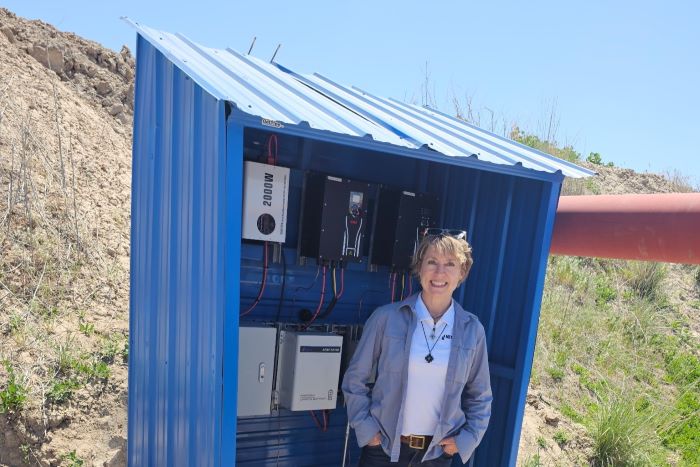
“It’s the technology upgrades that help me keep the next generation of my family on the farm.” I heard this quote again from a multigenerational Utah farmer on a farm tour recently as we were showcasing Utah’s first solar-powered subsurface drip irrigation system installation.
Utah was the first state to set aside funds specifically to support subsurface drip irrigation through the state Department of Agriculture and Food’s “Agricultural Optimization Program.” The main purpose of the program is to reduce agricultural water withdrawals to benefit one of the three water-stressed basins across the state: the Great Salt Lake, the Colorado and the Sevier River basins. The state also prioritized funding for telemetry, making it more financially accessible for farmers to invest in smart irrigation technologies.
Many farming families face the question, “how can we engage our kids in maintaining our farming legacy?”
As we celebrate Smart Irrigation Month, it’s a good time to pay attention to the role modernized technology is playing in enticing the next generation of farming families to continue their family legacy. Farmers that desire to save on rising labor costs and adopt technologies that allow them to remotely control, schedule, monitor, and receive alerts about their crops are often investing in these upgrades and asking their kids for help learning how to use the systems.
Farmer benefits associated with digital operating systems include remote control of valves, real-time irrigation monitoring, providing alerts about irrigation or system management, and the ability to generate monthly reports. Employing the convenience of smartphone technology, farmers can exercise continuous oversight and make real-time adjustments to their systems. They can measure soil moisture, water pressure and flow, flush filters, and schedule valve operations. Such systems facilitate cloud integration, allowing remote system access.
These systems can be simple or robust. For farmers wanting to make an investment in more robust systems, there are cost share programs available from public and private sources. At the federal level, farmers can access USDA NRCS EQIP funding typically under Practice Standard 449-Irrigation Water Management (IWM). Ask your local NRCS office what’s available in your state. Your state may also have grant or other programs available from the Department of Agriculture or Department of Water Resources. Just by adding automation to an already efficient irrigation system, farmers have seen water reductions in the 10%-30% range. These reductions can also easily be measured, and the digital operating systems can generate reports that make it easy for farmers to report outcomes to funding partners.
Private corporations that have set corporate water stewardship targets may also be interested in providing match funding that can make the difference for a farmer to upgrade to a full digital operating system instead of going with a basic package. Most corporations that have set such targets require ten years of what they call “volumetric benefit reporting,” which means they want a way to track the amount of water that has been reduced each year for ten years because of the upgraded system.
While “smart irrigation” is typically associated with maximizing water use efficiency, digital operating systems also maximize nutrient and labor use efficiency. This all translates to continuing to grow more with less. On-farm technological advancement is not only critical to maintaining our national food security, it could also be key to maintaining strong rural communities, led by multigenerational family farms. As Willie Nelson once said, “The fight to save family farms isn’t just about farmers. It’s about making sure that there is a safe and healthy food supply for all of us…It’s about a better America.”
Share on social media:
8280 Willow Oaks Corporate Drive | Suite 630 | Fairfax, VA 22031
Tel: 703.536.7080 | Fax: 703.536.7019
HOME | ABOUT US | ADVERTISE | SUBSCRIBE | CONTACT | PRIVACY POLICY | IA ANTITRUST STATEMENT